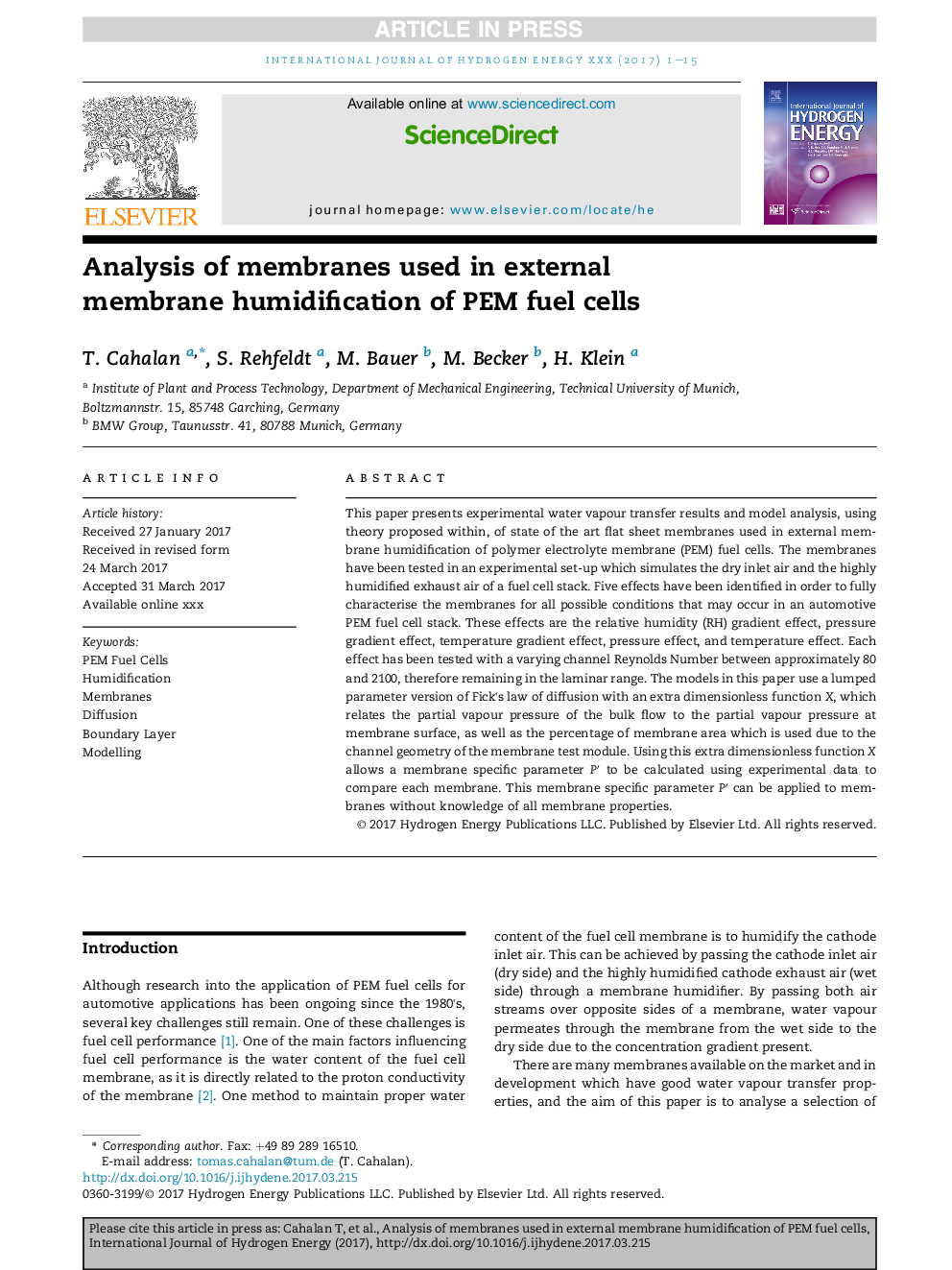| Article ID | Journal | Published Year | Pages | File Type |
|---|---|---|---|---|
| 5147629 | International Journal of Hydrogen Energy | 2017 | 15 Pages |
Abstract
This paper presents experimental water vapour transfer results and model analysis, using theory proposed within, of state of the art flat sheet membranes used in external membrane humidification of polymer electrolyte membrane (PEM) fuel cells. The membranes have been tested in an experimental set-up which simulates the dry inlet air and the highly humidified exhaust air of a fuel cell stack. Five effects have been identified in order to fully characterise the membranes for all possible conditions that may occur in an automotive PEM fuel cell stack. These effects are the relative humidity (RH) gradient effect, pressure gradient effect, temperature gradient effect, pressure effect, and temperature effect. Each effect has been tested with a varying channel Reynolds Number between approximately 80 and 2100, therefore remaining in the laminar range. The models in this paper use a lumped parameter version of Fick's law of diffusion with an extra dimensionless function X, which relates the partial vapour pressure of the bulk flow to the partial vapour pressure at membrane surface, as well as the percentage of membrane area which is used due to the channel geometry of the membrane test module. Using this extra dimensionless function X allows a membrane specific parameter Pâ² to be calculated using experimental data to compare each membrane. This membrane specific parameter Pâ² can be applied to membranes without knowledge of all membrane properties.
Related Topics
Physical Sciences and Engineering
Chemistry
Electrochemistry
Authors
T. Cahalan, S. Rehfeldt, M. Bauer, M. Becker, H. Klein,
